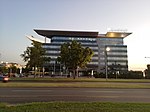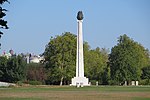Ministry of Internal Affairs (Serbia)

The Ministry of Internal Affairs of the Republic of Serbia (Serbian: Mинистарство унутрашњих послова, romanized: Ministarstvo unutrašnjih poslova; abbr. MUP) or the Ministry of Interior, is a cabinet-level ministry in the Government of Serbia. The Ministry is responsible for local and national Police services with municipal and district branches throughout the country. Its core responsibilities include: crime prevention, criminal apprehension, investigations, customs and border control, counter-terrorism, anti-corruption, anti-narcotics and disaster relief. The ministry is also responsible for issuing passports and personal identification to citizens. The current minister is Bratislav Gašić, in office since 26 October 2022. As of August 2016, the Ministry of Internal Affairs has a total of 42,817 employees, of whom 28,266 are uniformed officers. Of those, 70.2% have secondary education, while 27.8% have higher or high education.
Excerpt from the Wikipedia article Ministry of Internal Affairs (Serbia) (License: CC BY-SA 3.0, Authors, Images).Ministry of Internal Affairs (Serbia)
Mihailo Pupin Boulevard, Belgrade New Belgrade (New Belgrade Urban Municipality)
Geographical coordinates (GPS) Address Nearby Places Show on map
Geographical coordinates (GPS)
| Latitude | Longitude |
|---|---|
| N 44.820027777778 ° | E 20.427527777778 ° |
Address
Палата „Србија“ (Палата Србија)
Mihailo Pupin Boulevard 8
11070 Belgrade, New Belgrade (New Belgrade Urban Municipality)
Central Serbia, Serbia
Open on Google Maps









